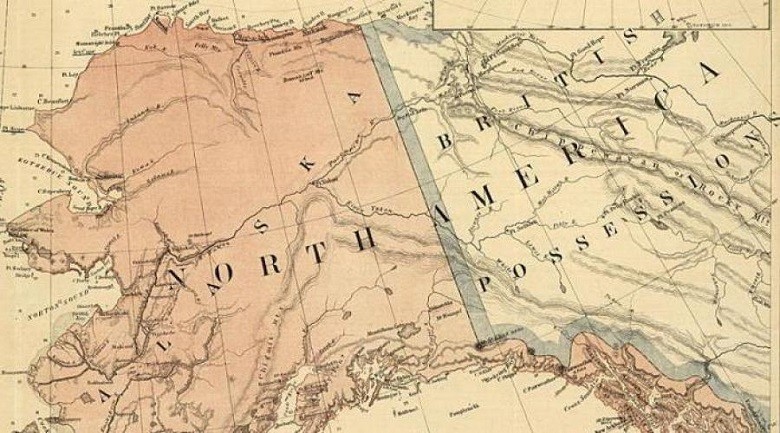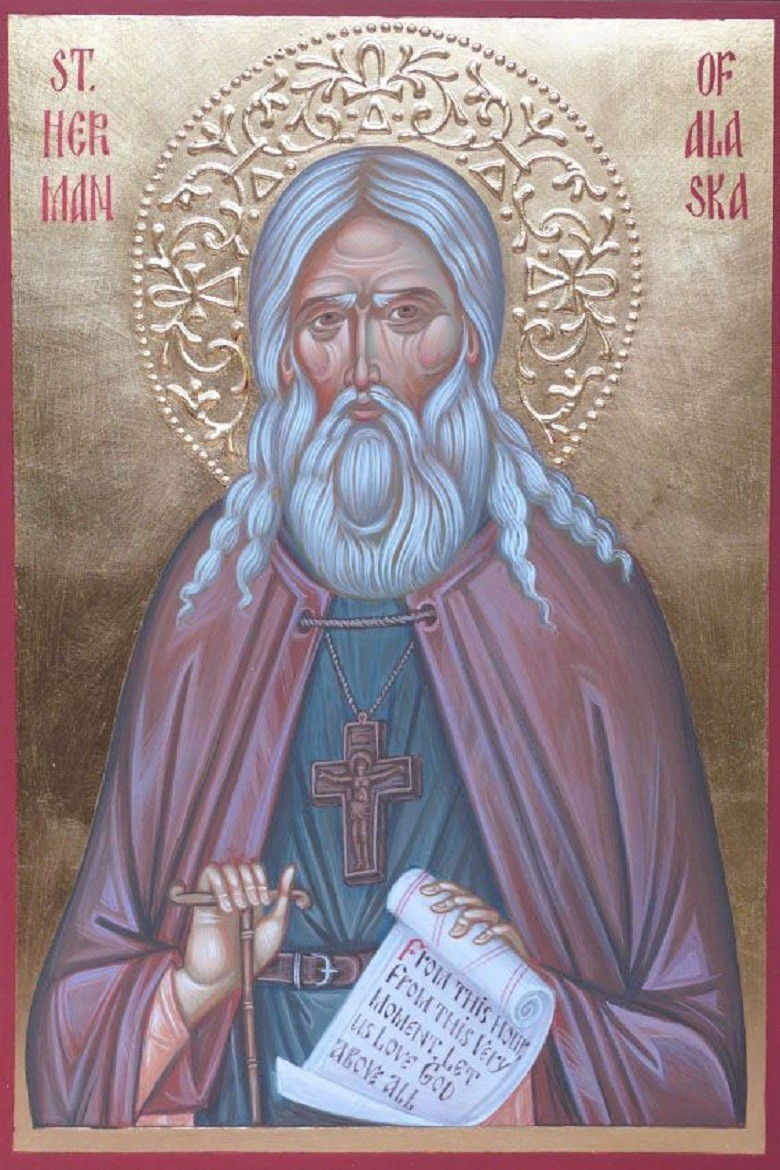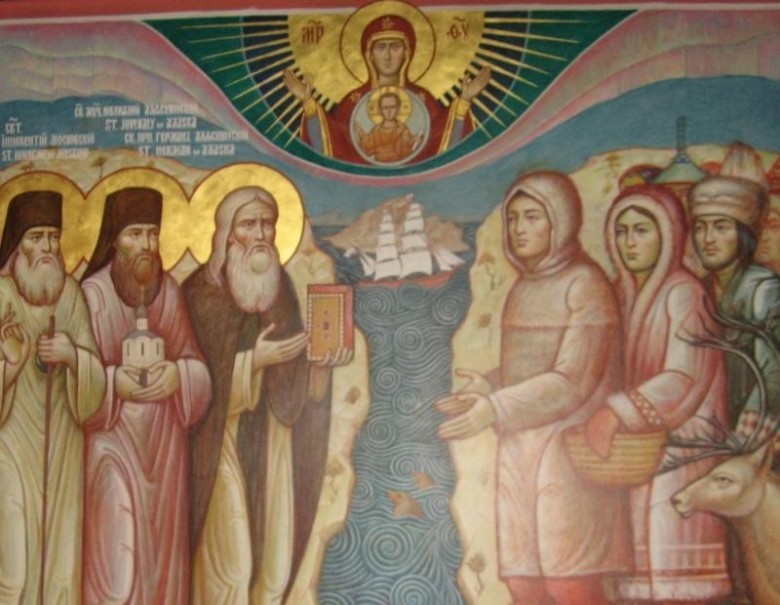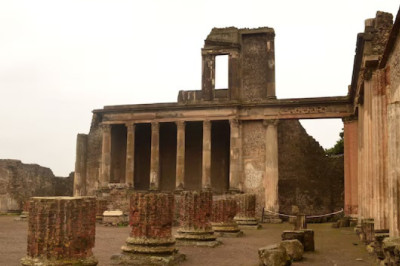
The Life of Saint Germanus: A Journey of Faith
The Island's Cry
Off the coast of Alaska lies Spruce Island, a small piece of land shrouded in mystery. In the tumultuous 1800s, the island faces its greatest test: a raging storm accompanied by the ominous threat of a tsunami. Local homes tremble under the fury of nature, yet one figure commands attention—a monk wrapped in simple robes. He steps from the tree line, a wooden icon firmly clasped in his hands, placing it upright in the sandy shore.
As fierce winds howl and waves crash around him, he kneels in fervent prayer, a quiet defiance against the chaos around him. The island, with its serene beauty marred by the impending doom, holds its breath under his supplication. The legend of Father Germanus begins here—not merely as a man of cloth but as a symbol of unwavering faith.

This story is a beacon from seventy years prior when Russians first set foot on Alaskan soil. In 1741, a lucrative expedition leads to the founding of the Russian-American Company, changing the landscape of the Pacific. However, as the storm's dark clouds gather over Spruce Island, it is not wealth or prosperity that echoes in the air; rather, it is the desperate cries of a people yearning for a savior. Intermediate moments of prayer and suffering intertwine the tales of settlers and explorers with that of the monk who would dedicate his life to God and the indigenous people.
The Call to A New Land
In 1772, at the Trinity & Sergius Hermitage in Russia, a young monk named Germanus begins a fervent prayer, seeking strength in his devotion to Christ. Since the age of sixteen, he has devoted himself entirely to faith, but his body now betrays him—an abscess under his chin makes swallowing and breathing painful. Death seems inevitable.
In a moment of desperation, he wipes the face of the Theotokos with a towel and places it on his wound. A miraculous healing occurs in a dream—when he awakens, the abscess has vanished, leaving only a faint mark as a testament to divine intervention. His life as a monk is solidified when he is tonsured and receives his name, Germanus.

Seating this newfound strength, Germanus learns that ten monks have been chosen to venture to the newly discovered lands of Alaska, fulfilling the request of Grigori, the head of the Russian-American Company. This expedition promises fortune, but more importantly, it signifies a calling to serve the delicate souls of the indigenous population.
The impending journey promises to be both arduous and transformative. As Germanus readies for travel across the treacherous seas to an unknown land, he is imbued with a sense of purpose—to bring hope to those who suffer, embodying the love of Christ and the light of the Church.
Arrival and Disillusionment
In 1794, as the ship crests the waves towards Kodiak Island, the ten monks breathe in the salty air filled with expectations. Their arrival creates a wave of excitement, yet Germanus and his fellow monks are soon confronted with a painful truth. The community they had envisioned—a peaceful, thriving congregation of faithful souls—is plagued by oppression and cruelty.
The native Aleuts are trapped under the ruthless grip of fur traders, treated as little more than slaves while their humanity is stripped away. Confronted by despair, the monks engage with the natives, who are initially wary but soon discover the warmth and compassion of their new visitors. The monks share their faith, nurturing the souls that have been battered by greed and malice. Within the first year, over 7,000 Aleuts embrace Orthodoxy, drawn not just by doctrine but by the genuine love they find among these humble men of God.
Father Germanus, seeing injustice unfold, becomes a fierce advocate for the oppressed. He writes heartfelt letters to Russia, imploring the Tsar to acknowledge the cruelty inflicted upon the Aleut islanders. His courage attracts ire, yet he continues to take the lead in the mission, believing that the love of Christ can heal all wounds.
In a world where darkness reigns, Germanus stands as a beacon of light, lighting the way for those who seek solace and belonging amid shared struggles and faith.
The Hermit’s Refuge
By 1811, as the echoes of suffering continue to shadow Kodiak, Father Germanus makes a pivotal decision. He leaves behind the chaos and cruelty of the settlement in search of spiritual solace. Just a mile from Kodiak, he discovers Spruce Island, a place that resonates with peace and offers him the solitude he yearns for.
The island embraces him, its air thick with evergreen scents, overgrown moss carpets the forest floor, and small springs bring life to a place seemingly untouched by despair. Here, Germanus embodies complete moderation, living on a minimal diet of berries, mushrooms, and seaweed. His existence is one of fasting and prayer, a testimony of faith amidst the natural splendor that surrounds him.
On the shoreline, there is a large rock where he spends countless hours in prayer. From this rocky outcrop, he seeks divine connection, interceding not just for himself but for the world he has left behind. As the seasons change, Father Germanus finds companionship in nature and the Holy Trinity, as he learns that perfect love casts out all fear, even in isolation.
Despite the physical distance from Kodiak, news of his benevolence spreads. Aleut families gradually seek him out, drawn to his aura of peace and his profound kindness. Life on Spruce Island blossoms into a close-knit community, as native families embrace the chance to cultivate their spirituality in the shadow of a humble holy man.
A Champion of the Sick
In the year 1819, Alaska faces a devastating plague. The threat of illness looms heavily over Kodiak, and the ill-fated native population bears the brunt. Traders arriving with the sickness contribute to the rapid spread of despair. As fear grips the hearts of many, Father Germanus feels the pull of compassion ignite within him.
He watches in horror as mothers weep, their bodies lifelessly dragging hungry children, seeking food in vain. While the world around him suffers, Germanus takes a bold risk, leaving the sanctuary of Spruce Island to aid the afflicted population in Kodiak.
Battling his own fears, he tirelessly assists in the care of the sick, working day and night. With each day that passes, the horror of the scenes he witnesses hardens his resolve to help those in need. He eases their pain, provides physical nourishment, and inspires hope amidst death and sorrow.
After a month of relentless effort, Father Germanus returns to Spruce Island, not empty-handed but with a house full of orphaned children who have lost their families to the plague. He dedicates himself to caring for them, building a school, a chapel, and expanding the community he has cultivated.
In the eyes of these children, he becomes their father, their guardian angel amid suffering. Through sacrificial love, Germanus builds a legacy of hope and faith that weathers each storm that threatens to tear it apart.
Prayers Against the Storm
As the community thrives on Spruce Island, the peace is abruptly threatened by an oncoming tsunami, born from the storm that brews in the distance. A dark revelation descends over the land, fears rising as waves crash against their shores. Germanus, however, remains undeterred in the face of peril.
Gathering the faithful, he instructs them not to panic. Instead, he turns their fears into fervent prayers, urging them to remain calm and resolute in their belief. The water, he declares, will not pass the sacred icon he has placed in the sand.
In this moment of collective faith, the community watches as the seas churn violently, but what could be an unprecedented disaster transforms into a testament of divine protection. As the waves rise ominously, the wooden icon stands firm, beaconing a reminder of hope in their hearts.
The wind howls around them, but it is drowned out by their united voices lifted in prayer. Their faith envelops the island, a living blanket warding off the threatening waters, as the sea somehow seems to shift course, as if heeding the monk’s call to God.
When the storm passes and the calm returns, the community realizes they have witnessed a miracle—one born from trust and genuine love for their faith. And among them stands Father Germanus, a steadfast shepherd guiding his flock through the darkest of storms.
Lessons in Love
Father Germanus's wisdom becomes renowned among the Aleut families on Spruce Island. He devotes his days to teaching the children in his care, emphasizing the importance of love and selflessness. One evening, as he invites a group of young men for a lesson, a profound conversation ensues.
Germanus poses the question—"What do you love most, and what truly brings happiness?" Each young man shares earnest reflections, revealing their dreams and desires. With gentle candor, Father Germanus redirects their focus.
"Shouldn't we strive to love God above all? Shouldn't our biggest desire be to seek Him?" His voice carries weight, and the group recognizes the truth in his words, his heartfelt plea now resonating within them.
However, no one can be truly honest about their feelings towards the divine, no matter how well-meaning. As he shares his struggles in fully loving God, the young men listen intently to Father Germanus’s transparent confession. He has tried for more than forty years, tirelessly seeking to love God, yet acknowledges that they rarely think of Him.
“Love is more than words; it’s a lifestyle,” Germanus explains, reminding them to pray, keep His commandments, and remember Him in all things.
The lesson lingers long after the sun sets. The children and young men leave with a deeper understanding of love—an understanding that the greatest love is a commitment made daily through faith, prayer, and action.
The Forest Fire
In the summer of 1836, nature employs its fierce forces again, this time in the form of a rampant forest fire sweeping across Spruce Island. As the flames draw nearer to their cherished homes, panic ensues among the Aleut community. They fear destruction is imminent and the memories carved into their lives will be reduced to ashes.
Once again, in the face of disaster, Father Germanus becomes their anchor. Gathering the community in the forest, he calms their anxious hearts, instructing them to form a line of turned moss—a simple barrier against the flames. With unwavering belief, he tells them to pray and trust that the fire would not cross their path.
That night, the flames rage, flickering ferociously towards them, licking at the air and threatening their lives. But when morning arrives, and the fire approaches the moss barrier, something miraculous unfolds. Instead of engulfing their homes, the flames flow along the line, moving but not attacking.
Witnessing this miracle stirs deep emotions, as the community realizes that their faith and prayers have protected them once more. The flames pass and retreat, leaving the lives and lands untouched. The children watch, wide-eyed, as the smoke clears, and once again, Father Germanus’s role as protector and guide solidifies in their hearts.
As they gather in gratitude, a renewed sense of purpose fills them; faith indeed moves mountains—and, in their case, has redirected raging fires.
Prophecies and Farewells
With 1837 nearing its end, Father Germanus senses the final chapters of his earthly journey are approaching. Now a wise elder, he spends his days teaching the children and preparing them for the role they will play in the community’s future. This knowledge, combined with visions from God, enables him to deliver significant prophecies to his beloved flock.
In moments marked by sincerity and foresight, he reveals to his followers that no priest will be present at his passing, urging them to bury him themselves. He speaks softly yet firmly, ensuring they understand the importance of honoring his wishes.

As winter blankets the island, Germanus lies peacefully asleep, his devoted disciple, Geresim, by his side. In the glow of candlelight, Geresim reads the Acts of the Apostles aloud. At the moment of Germanus’s crossing into the eternal realm, the heavens bear witness—a brilliant pillar of light rises to the sky, illuminating the darkness.
Following his death, news reaches a local colony administrator, who insists they not bury Father Germanus until he arrives with a priest. Yet, unbeknownst to them, a fierce storm prevails over the island, thwarting all attempts to reach Spruce Island for a month. The community, steadfast in honoring their mentor's wishes, ultimately chooses to lay him to rest as he requested.
Germanus’s body remains incorrupt and odorless, a final testament to his righteous life and unwavering faith.
Legacy of Faith
As the community buries Father Germanus, calm settles over Spruce Island. Only after the earth embraces him does the storm finally abate. Years roll on and the impact of the monk’s presence lingers in the air—the vibrant community he nurtured thrives, but also a prophecy hangs above them. He proclaimed that thirty years after his passing, all would perish except for one man, Constantine, who would bear witness to the legacy left behind.
In the 1860s, a Bishop—Pedro of Alaska—pursues the life of Father Germanus, unveiling a wealth of stories that had nearly been forgotten. His holy life reveals connections to faith that transcend time and space.
Time heals many wounds; on February 2, 1970, Father Germanus is glorified as a saint. Pilgrims from afar begin to visit Spruce Island, making the pilgrimage to the humble island where miracles once transpired. The sacred spring becomes a place of healing, a reflection of the saint’s love for the communities he touched.
As the years flow into the present, the lives shaped by Germanus continue to echo with the same heartfelt message: love God above all things and seek Him fervently in all moments. With reverence, the story of Father Germanus illuminates hearts, guiding many down the path of faith—a testament that despite storms, love and dedication can withstand the passage of time.




















Comments
0 comment